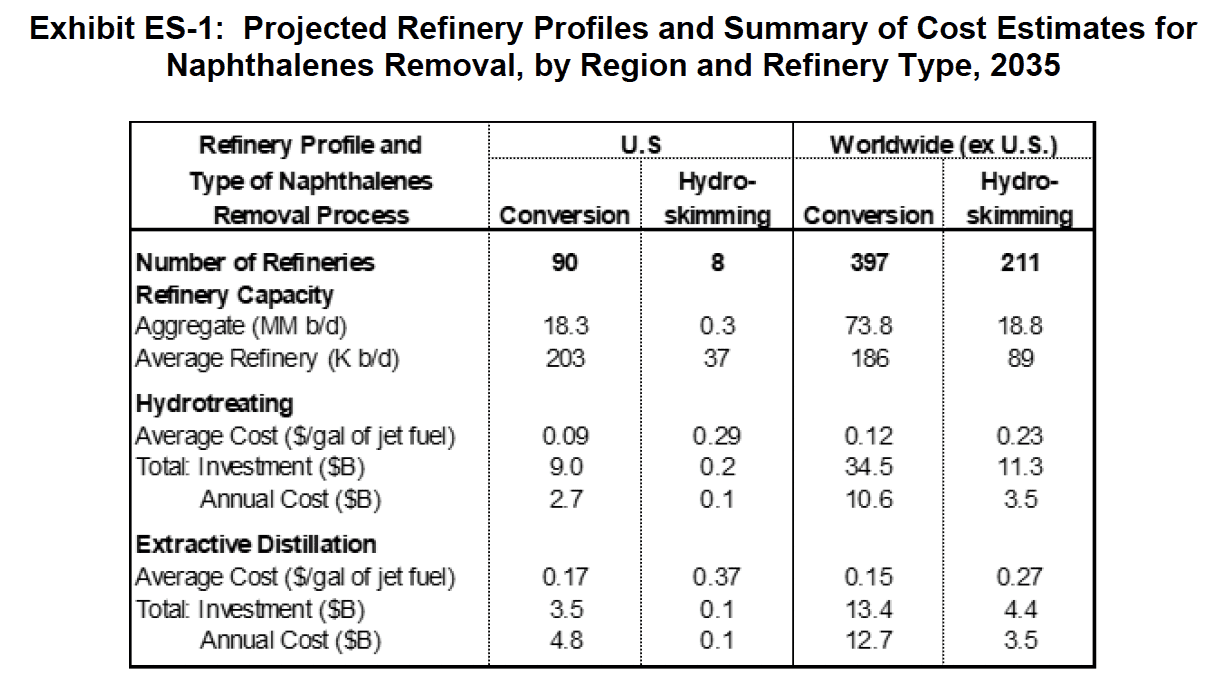Consultant report
Techno-economic assessment of process routes for naphthalenes control in petroleum jet fuel
Petroleum jet fuel (PJF) is the predominant fuel used in the global commercial aviation sector. Most proposed pathways for decarbonizing commercial aviation involve replacing PJF with a sustainable aviation fuel (SAF)—that is, jet fuel produced from biomass or renewable power. But near-term SAF use will be limited by its high cost (2 to 5 times higher than PJF), supply constraints, and the geographic mismatch between feedstock supply and jet fuel demand.
Combustion of PJF leads to the absorption of thermal radiation in the atmosphere due to engine emissions of carbon dioxide and ice crystals in the condensation trails formed by the engines’ exhaust. The ice crystals form by the condensation of water vapor on small particulate matter (e.g., soot) present in the engine exhaust. Recent research indicates that a particular class of aromatics compounds, naphthalenes, constituting a small portion (∼2 vol%) of PJF, account for a disproportionately large share of the particulate matter in engine exhaust.
Accordingly, interest has arisen in either reducing the volume fraction of aromatics or essentially eliminating naphthalenes from PJF. This study aims to (1) delineate the type of processes and process modifications that refineries would have to undertake to reduce the naphthalenes content of PJF, and (2) provide a preliminary, first-order assessment of the technical and economic feasibility of these process routes.
Two refining technologies were considered: hydrotreating and extractive distillation. This analysis indicates that both processes could remove most of the naphthalenes in PJF by processing only straight run kerosene, the PJF component in which most of the naphthalenes reside. We conclude that hydrotreating could control naphthalenes at a cost of US$0.09 to US$0.12 per gallon for conversion refineries (Exhibit ES-1), which are the dominant suppliers of PJF in most regions of the world.
Estimated costs are higher for smaller hydro-skimming refineries that produce less PJF per barrel of crude input than conversion refineries. Extractive distillation is estimated to be more costly than hydrotreating, owing to significant (6% to 7%) loss of PJF volume.

